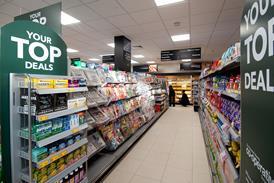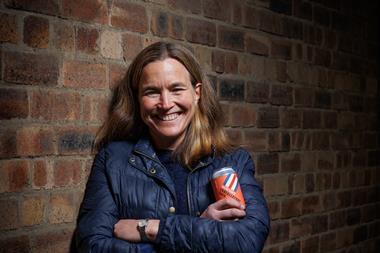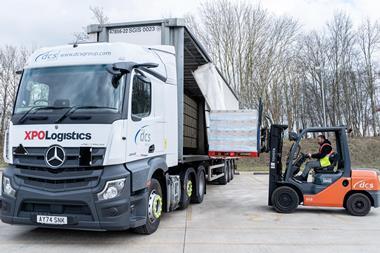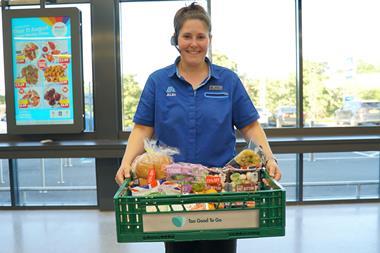Buying has become a complex business. Exclusive research for The Grocer reveals that more people are being caught up in the decision-making process. James Durston reports
Whether it is chefs making broth or buyers making deals, too many people is a bad thing. And according to research carried out exclusively for The Grocer, the number of people involved in the buying process, already considered too high by some, is increasing.
Retailers were warned to simplify their procedures two years ago when The Grocer first carried out a survey revealing how complex the buying process in the major retailers had become. However, two years on, the situation has become worse, with lengthy delays in getting products to shelf common.
In 2003, we asked key personnel working in the head offices of multiple grocers how many people were involved in the buying process. Almost a quarter said six or more, with 14% saying it was more than 10.
In our latest survey, 32% say that six or more people are involved, and 18% that 10 or more are, both figures significantly up on 2003. Asked the same question, store managers plump for even higher numbers (see table) - illustrating that the problem is as much one of perception as reality. Indeed, when our reader panel of buyers was asked this week how many people were involved in the buying process, their answers ranged from one to as many as 12.
While the figures do not necessarily reflect the exact number of people involved, the very fact that they have shot up substantiates what many have suspected for some time - that the buying process is becoming too involved.
Tim Sleep, head of retail at Ernst & Young, says: “It’s definitely an area where retailers can increase their efficiencies. Rising prices of oil, rent, the minimum wage and so on are going to increase bottom line costs by 4% this year, so retailers must look at duplicated roles and get rid of some of them.”
Buyers and suppliers blame each other for the increasing complexity. One supplier says: “There’s a lot more tension in retailers these days. It’s more complex because you have two or more people, of similar levels of seniority, and they all have to agree.”
However, a buyer argues: “Manufacturers have probably done more to make the decision more complex than retailers. They cause issues by rewarding account teams on pure penetration. This creates lengthy and meaningless debates about forcing lines into an extra 50 stores, delaying the launch into the 600 stores that will actually sell the line!”
In fact, the evolution of the process has been an inevitable part of increasing competition, particularly in own label. Frontline buying for own label is now normally done by two people: a buyer, for the money making, and a food technologist, for quality control. This way, retailers hope to get the best recipe and the lowest price.
But it can cause delays. Suppliers now have two points of contact, which can undermine their attempts to build intimate relationships and cause communication problems. And there is also scope for infighting at the retailer. One supplier says: “You can sometimes find yourself in a room with a buyer and a technologist from a customer. The buyer wants 50p for the product but the technologist wants a product that will cost £1.50. You end up just sitting there, because they can’t agree on whether price or quality is most important.”
Throw in the decision makers behind them - ie the category managers and directors; and then take into account factory audits, due diligence, debates about packs and recipe quality that accompany own label listings, and it can take six months or longer for products to hit the shelves.
Even branded products can take four months or more, but once again retailers are loath to accept total responsibility. Asda CEO Andy Bond publicly rebuked retailers last year for taking up to six months to put a new product on shelf, when the fashion industry can do it in six weeks, but many say stock availability and delivery from the supplier is the cause of delays, rather than intricate procedures at the retail end.
One buyer admits that while it can take half a year to launch an own label product, in an “emergency” this can become four days. So why can the whole process not then be reduced to an average of a few weeks?
There are signs that retailers are actually trying to make the launch process quicker. One buyer confirms that the director of buying at his company no longer has to approve new products. This speeds up the time between agreeing to list products and getting them on shelf by up to four weeks. He adds that new IT has improved communication between suppliers, buyers and other internal departments.
Sleep believes the process is becoming slicker: “Buyers have previously had an aura of mystique. But there are tools now available that make some decisions for them, such as when something is sourced overseas, determining duty relief or the time it takes to get the product to the UK. This can all be automated. The whole buying role is becoming more efficient to cut costs and it won’t be long before the number of people in the buying process starts to fall.”
Their number is up
>>how many people are involved in buying?
How many decision makers head office staff think are involved
20032006
One10%8%
Two to three36%46%
Four to five24%12%
Six to 1010%14%
More than 1014%18%
How many decision makers store managers think are involved
20032006
One6%0%
Two to three18%22%
Four to five6%10%
Six to 1010%12%
More than 1040%44%
Source: the grocer/BMRB international
Sainsbury’s view
>>new rules complicate the process
Mike Attwood, business unit director, trading support, explains how the buying decisions are made at Sainsbury:
“The buying process has barely changed in the past 20 years, but surrounding the buying process are new rules on competition and food safety, which have complicated the process. However, the decision is still with the category manager supported by the product technologists.
“Buying decisions for a group of products are the responsibility of the category manager - who leads a team of buyers, each managing a sub-category, and agrees decisions such as pricing and ranging. A supply chain forecaster ensures volumes are managed effectively.
“The category manager’s decisions are framed in the category plan, which guides pricing, policy, promotional activity, ranging timescales and new product plans. New lines require technical approval to ensure the product is safe and produced to the required quality. In these cases product technologists agree the decision with the category manager.
“The time from idea to launch has always been eight to 12 weeks, but packaging lead times could add several weeks to this.
“IT has streamlined many of the administrative aspects of the decision and simplified ordering, invoicing, forecasting, product specifications and payments.”
Whether it is chefs making broth or buyers making deals, too many people is a bad thing. And according to research carried out exclusively for The Grocer, the number of people involved in the buying process, already considered too high by some, is increasing.
Retailers were warned to simplify their procedures two years ago when The Grocer first carried out a survey revealing how complex the buying process in the major retailers had become. However, two years on, the situation has become worse, with lengthy delays in getting products to shelf common.
In 2003, we asked key personnel working in the head offices of multiple grocers how many people were involved in the buying process. Almost a quarter said six or more, with 14% saying it was more than 10.
In our latest survey, 32% say that six or more people are involved, and 18% that 10 or more are, both figures significantly up on 2003. Asked the same question, store managers plump for even higher numbers (see table) - illustrating that the problem is as much one of perception as reality. Indeed, when our reader panel of buyers was asked this week how many people were involved in the buying process, their answers ranged from one to as many as 12.
While the figures do not necessarily reflect the exact number of people involved, the very fact that they have shot up substantiates what many have suspected for some time - that the buying process is becoming too involved.
Tim Sleep, head of retail at Ernst & Young, says: “It’s definitely an area where retailers can increase their efficiencies. Rising prices of oil, rent, the minimum wage and so on are going to increase bottom line costs by 4% this year, so retailers must look at duplicated roles and get rid of some of them.”
Buyers and suppliers blame each other for the increasing complexity. One supplier says: “There’s a lot more tension in retailers these days. It’s more complex because you have two or more people, of similar levels of seniority, and they all have to agree.”
However, a buyer argues: “Manufacturers have probably done more to make the decision more complex than retailers. They cause issues by rewarding account teams on pure penetration. This creates lengthy and meaningless debates about forcing lines into an extra 50 stores, delaying the launch into the 600 stores that will actually sell the line!”
In fact, the evolution of the process has been an inevitable part of increasing competition, particularly in own label. Frontline buying for own label is now normally done by two people: a buyer, for the money making, and a food technologist, for quality control. This way, retailers hope to get the best recipe and the lowest price.
But it can cause delays. Suppliers now have two points of contact, which can undermine their attempts to build intimate relationships and cause communication problems. And there is also scope for infighting at the retailer. One supplier says: “You can sometimes find yourself in a room with a buyer and a technologist from a customer. The buyer wants 50p for the product but the technologist wants a product that will cost £1.50. You end up just sitting there, because they can’t agree on whether price or quality is most important.”
Throw in the decision makers behind them - ie the category managers and directors; and then take into account factory audits, due diligence, debates about packs and recipe quality that accompany own label listings, and it can take six months or longer for products to hit the shelves.
Even branded products can take four months or more, but once again retailers are loath to accept total responsibility. Asda CEO Andy Bond publicly rebuked retailers last year for taking up to six months to put a new product on shelf, when the fashion industry can do it in six weeks, but many say stock availability and delivery from the supplier is the cause of delays, rather than intricate procedures at the retail end.
One buyer admits that while it can take half a year to launch an own label product, in an “emergency” this can become four days. So why can the whole process not then be reduced to an average of a few weeks?
There are signs that retailers are actually trying to make the launch process quicker. One buyer confirms that the director of buying at his company no longer has to approve new products. This speeds up the time between agreeing to list products and getting them on shelf by up to four weeks. He adds that new IT has improved communication between suppliers, buyers and other internal departments.
Sleep believes the process is becoming slicker: “Buyers have previously had an aura of mystique. But there are tools now available that make some decisions for them, such as when something is sourced overseas, determining duty relief or the time it takes to get the product to the UK. This can all be automated. The whole buying role is becoming more efficient to cut costs and it won’t be long before the number of people in the buying process starts to fall.”
Their number is up
>>how many people are involved in buying?
How many decision makers head office staff think are involved
20032006
One10%8%
Two to three36%46%
Four to five24%12%
Six to 1010%14%
More than 1014%18%
How many decision makers store managers think are involved
20032006
One6%0%
Two to three18%22%
Four to five6%10%
Six to 1010%12%
More than 1040%44%
Source: the grocer/BMRB international
Sainsbury’s view
>>new rules complicate the process
Mike Attwood, business unit director, trading support, explains how the buying decisions are made at Sainsbury:
“The buying process has barely changed in the past 20 years, but surrounding the buying process are new rules on competition and food safety, which have complicated the process. However, the decision is still with the category manager supported by the product technologists.
“Buying decisions for a group of products are the responsibility of the category manager - who leads a team of buyers, each managing a sub-category, and agrees decisions such as pricing and ranging. A supply chain forecaster ensures volumes are managed effectively.
“The category manager’s decisions are framed in the category plan, which guides pricing, policy, promotional activity, ranging timescales and new product plans. New lines require technical approval to ensure the product is safe and produced to the required quality. In these cases product technologists agree the decision with the category manager.
“The time from idea to launch has always been eight to 12 weeks, but packaging lead times could add several weeks to this.
“IT has streamlined many of the administrative aspects of the decision and simplified ordering, invoicing, forecasting, product specifications and payments.”













No comments yet